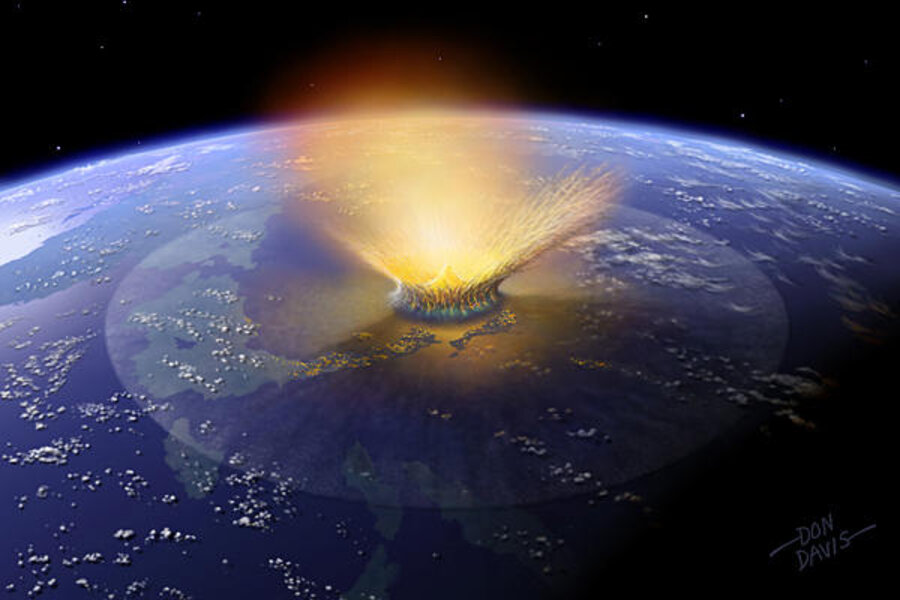Huge asteroid on possible collision course with Earth (172 years from now)
Loading...
A rather large asteroid is on a possible collision course with the Earth, space scientists have revealed. But there is no need to panic – even if an impact date is confirmed, it is not likely to be for 172 years.
An international team, including NASA experts, say in new research that the space rock has a one-in-a-thousand chance of an impact.
They may sound like high odds, but they are enough to mean the threat from the 560-meter (612-yard) wide asteroid will have to be taken seriously.
If such a cosmic missile hit land, it would blast a crater several miles wide – enough to devastate a city and wreak destruction for hundreds of miles around.
The good news is the evidence suggests that if there is an impact then it is most likely to happen in 2182. That is clearly a long way of and provides time to work out strategies to deal with the threat.
The asteroid was discovered in 1999 and is dubbed 1999 RQ36. The scientists had labelled it a “potentially hazardous asteroid” of the Apollo group because its orbit brings it close to Earth. But it was then considered a much lower risk.
Now scientists from Spain, Italy and NASA’s Jet Propulsion Laboratory in California have used computer models to produce a more accurate forecast of its path. Their results are published in the science journal Icarus.
The asteroid’s orbit has been fairly well known thanks to 290 visual observations and 13 measurements using radar, say the scientists. It takes around 14 months to go round the Sun. However, a disturbance called the Yarkovsky effect, caused by the force of sunlight on smaller bodies, introduces a significant “orbital uncertainty”.
Maria Eugenia Sansaturio, of Valladolid University, Spain, said: “The total impact probability of asteroid 1999 RQ36 can be estimated at 0.00092 – approximately one-in-a-thousand chance – but what is most surprising is that over half of this chance (0.00054) corresponds to 2182.”
Scientists had previously suggested sending a space mission called OSIRIS-REx (corr) to collect samples of the cosmic missile. Bill Cutlip of NASA’s Goddard Space Flight Centre in Greenbelt, Maryland, said: “This asteroid is a time capsule from before the birth of our solar system. You can’t underestimate the value of a pristine sample.”
Scientists have reduced the threat from another 300-meter wide space rock called Apophis which is due to make two close approaches to Earth within the next 30 years.
The first, on Friday the 13th of April, 2029, is virtually certain to miss us though it will come closer than TV and other geostationary satellites, at a distance of only 18,300 miles. But uncertainty over the effect of that close encounter meant that astronomers could not rule out the chance of an impact seven years later in 2036.
Now, however, the chance of a catastrophic collision on 13 April of that year have dropped from one-in-45,000 to an even more reassuring one-in-250,000.
• Discover space for yourself and do fun science with a telescope. Here is Skymania’s advice on how to choose a telescope. We also have a guide to the different types of telescope available. Check out our monthly sky guide too!
Paul Sutherland blogs at Skymania News





